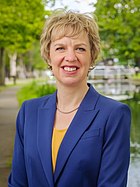| |||||||||||||||||||||||||||||||||||||||||||||||||||||||||||||||||||||||||||||||||||||||||||||||||||||||||||||||||||||||||||||||||||||||||||||
949 County and City Council Seats | |||||||||||||||||||||||||||||||||||||||||||||||||||||||||||||||||||||||||||||||||||||||||||||||||||||||||||||||||||||||||||||||||||||||||||||
|---|---|---|---|---|---|---|---|---|---|---|---|---|---|---|---|---|---|---|---|---|---|---|---|---|---|---|---|---|---|---|---|---|---|---|---|---|---|---|---|---|---|---|---|---|---|---|---|---|---|---|---|---|---|---|---|---|---|---|---|---|---|---|---|---|---|---|---|---|---|---|---|---|---|---|---|---|---|---|---|---|---|---|---|---|---|---|---|---|---|---|---|---|---|---|---|---|---|---|---|---|---|---|---|---|---|---|---|---|---|---|---|---|---|---|---|---|---|---|---|---|---|---|---|---|---|---|---|---|---|---|---|---|---|---|---|---|---|---|---|---|---|
| Opinion polls | |||||||||||||||||||||||||||||||||||||||||||||||||||||||||||||||||||||||||||||||||||||||||||||||||||||||||||||||||||||||||||||||||||||||||||||
| Turnout | 49.4% | ||||||||||||||||||||||||||||||||||||||||||||||||||||||||||||||||||||||||||||||||||||||||||||||||||||||||||||||||||||||||||||||||||||||||||||
| |||||||||||||||||||||||||||||||||||||||||||||||||||||||||||||||||||||||||||||||||||||||||||||||||||||||||||||||||||||||||||||||||||||||||||||
 Results by counties and cities | |||||||||||||||||||||||||||||||||||||||||||||||||||||||||||||||||||||||||||||||||||||||||||||||||||||||||||||||||||||||||||||||||||||||||||||
The 2024 Irish local elections were held in all local authorities in Ireland on Friday, 7 June 2024. European Parliament elections were held on the same day.[1] It also included the 2024 Limerick mayoral election, for the first directly elected mayor in Ireland.[2][3] Each local government area (a city, a county, or a city and county) is divided into local electoral areas (LEAs) where three to seven councillors are elected on the system of proportional representation by means of the single transferable vote (PR-STV).[4] This year saw a record number of women standing for election, with 31.4% (682 out of 2,171 candidates) being female.[5] 26.1% of those elected were women (248 out of 949), a small increase compared to the last elections.[6] Voter turnout for the elections was 49.4%, the first time less than half of registered voters participated, slightly down from 50.2% in 2019.[7]
- ^ "Polling Day Orders made for European, local and Limerick mayoral elections". Gov.ie (Press release). Department of Housing, Local Government and Heritage. 6 April 2024.
- ^ "Cabinet approves legislation for a directly elected Mayor for Limerick". Government of Ireland. 25 July 2023. Retrieved 3 February 2024.
- ^ English, Bernie (6 March 2024). "President signs Mayor of Limerick bill into law". Limerick Post. Retrieved 13 March 2024.
- ^ "Local elections in Ireland". Citizens Information Board. Retrieved 20 April 2024.
- ^ "Local elections 2024: See the full list of candidates in your area". 7 June 2024. Archived from the original on 7 June 2024. Retrieved 7 June 2024.
- ^ "Womens' [sic] groups call for gender quotas in local elections after 'disappointing' results". 15 June 2024. Archived from the original on 15 June 2024. Retrieved 15 June 2024.
- ^ "Analysis: We had record low turnout in these elections - what does it mean?". 23 June 2024. Archived from the original on 23 June 2024. Retrieved 23 June 2024.








